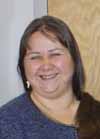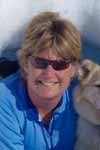From the Executive Director:

Only in hindsight can we perfectly zero in on the most important details. We’d like to be able to say we can see what’s coming and prepare for the best possible outcome. Often, however, the details that matter only appear obvious after the dust has settled. We complacently assume that if nothing changes what worked yesterday should work tomorrow. We are suspicious of change, assuming that change increases risk for undesired outcomes. Perhaps.


